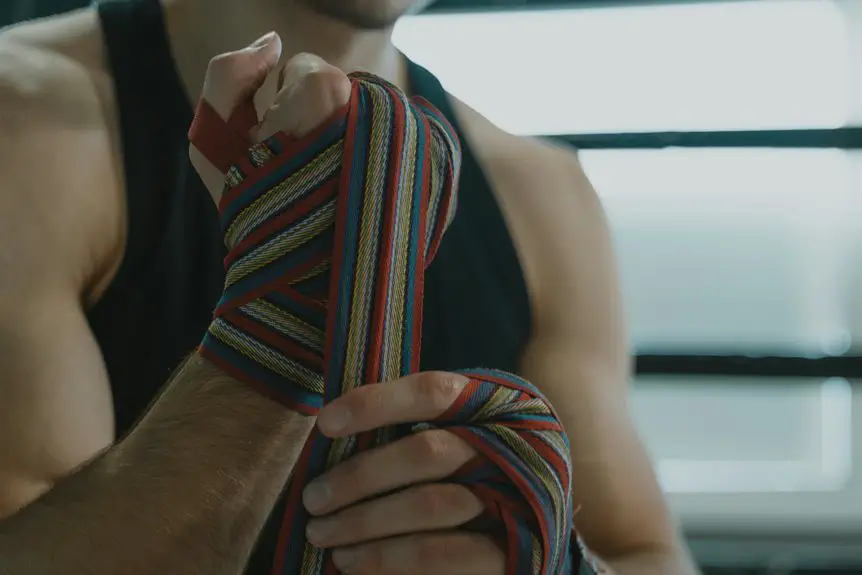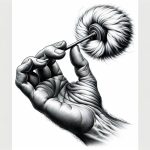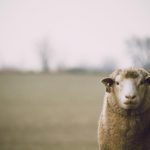When you push through a tough spin class and notice your shirt sticking uncomfortably to your skin, you realize how essential the right fabric can be. Choosing moisture-wicking materials isn’t just about comfort—it can impact your performance and recovery. From synthetic fibers like polyester and nylon to natural options like merino wool, each fabric offers unique benefits. Understanding which one suits your workout style and conditions can make all the difference.
Table of Contents
Key Takeaways
- Polyester is ideal for intense workouts due to its lightweight, quick-drying, and excellent moisture-wicking properties.
- Merino wool naturally wicks moisture, regulates temperature, and resists odor, making it great for varied intensity and conditions.
- Nylon offers durability and flexibility, suitable for rough environments while effectively managing moisture during physical activity.
- Bamboo fabric provides softness, breathability, and antimicrobial benefits, helping reduce odor and wick sweat in intense sessions.
- Polypropylene excels at water resistance and wicking but is less breathable, best for specific high-moisture scenarios with lower airflow.
Understanding Moisture-Wicking Technology in Fabrics
Although moisture-wicking technology might sound complex, it simply helps pull sweat away from your skin to keep you dry and comfortable during physical activity.
When you sweat, moisture retention in regular fabrics can leave you feeling damp and heavy. Moisture-wicking fabrics work differently—they transfer sweat from your skin to the fabric’s outer surface, where it evaporates more quickly.
This process relies heavily on fabric breathability, allowing air to circulate and speed up drying. By reducing moisture retention, these fabrics prevent chafing and help regulate your body temperature.
Key Fabrics With Superior Moisture Management
Now that you understand how moisture-wicking technology works to keep you dry and comfortable, it’s helpful to know which fabrics excel at managing moisture.
Choosing the right fabric boosts your performance by balancing moisture retention and fabric durability. Here are five key fabrics you should consider:
- Merino wool: Naturally wicks moisture while resisting odor; durable and breathable.
- Polyester: Lightweight, quick-drying, and strong with excellent moisture management.
- Bamboo: Soft, moisture-absorbent, and naturally antimicrobial but less durable.
- Tencel (Lyocell): Smooth, moisture-wicking, and eco-friendly with moderate durability.
- Polypropylene: Highly water-resistant with great wicking but less breathable.
Each fabric offers a unique balance between moisture retention and durability, so pick one that fits your workout intensity and comfort needs.
Comparing Polyester and Nylon for Athletic Performance
When choosing between polyester and nylon for your athletic gear, understanding their distinct properties can help you make the best call for your workouts.
Polyester advantages include excellent moisture-wicking capabilities, quick drying, and resistance to shrinking and stretching, making it a reliable choice for high-intensity sessions. It also retains color well, so your gear looks fresh longer.
On the other hand, nylon durability is impressive—it withstands abrasion and tearing better, ideal if your activities involve rough surfaces or extreme conditions. Nylon also feels softer and more flexible, which enhances comfort during long workouts.
Ultimately, if moisture management tops your list, polyester shines. But if you need gear that endures tougher wear and tear, nylon’s durability makes it worth considering for athletic performance.
Benefits of Merino Wool in Outdoor and Intense Activities
When you’re out in the elements or pushing your limits, Merino wool naturally manages moisture to keep you dry.
It also regulates your body temperature, so you stay comfortable whether it’s hot or cold.
You’ll find these features make it a top choice for outdoor and intense activities.
Natural Moisture Management
Although synthetic fabrics have their place, you’ll find that Merino wool naturally manages moisture better during outdoor and intense activities. Its unique fiber structure uses natural fabric benefits and moisture absorption techniques that keep you comfortable without feeling damp.
Here’s why Merino wool stands out for natural moisture management:
- Absorbs moisture vapor, pulling sweat away from your skin
- Retains moisture without feeling wet or heavy
- Allows quick drying through natural breathability
- Resists odor buildup thanks to natural antimicrobial properties
- Maintains softness and comfort even when damp
Temperature Regulation Benefits
Merino wool not only excels at managing moisture but also plays a key role in regulating your body temperature during outdoor and intense activities. It uses natural temperature control strategies to keep you warm when it’s cold and cool when it’s hot by adjusting to your body heat. Its fine fibers promote humidity management techniques, preventing sweat buildup and ensuring comfort.
| Feature | Benefit | Activity Type |
|---|---|---|
| Breathable fibers | Enhanced ventilation | Running, Hiking |
| Insulating properties | Retains warmth | Cold weather sports |
| Moisture wicking | Keeps skin dry | High-intensity workouts |
With Merino wool, you optimize your performance by staying dry and comfortable through effective temperature regulation.
The Role of Bamboo and Natural Fabrics in Moisture Control
Because bamboo and other natural fabrics offer unique moisture-wicking properties, they’ve become popular choices for sportswear. You’ll appreciate how bamboo benefits your workouts by keeping you dry and comfortable.
Plus, natural sustainability means you’re choosing eco-friendly options that reduce environmental impact. When you pick bamboo or similar fabrics, you get:
- Superior breathability to let sweat evaporate quickly
- Antibacterial qualities that reduce odor during intense sessions
- Soft texture that feels gentle against your skin
- Renewable resources that support eco-conscious choices
- Natural moisture absorption without trapping heat
These qualities make bamboo and natural fabrics excellent for moisture control in intense sports and workouts. You stay fresher, cooler, and contribute to a greener planet simultaneously.
Innovative Fabric Blends and Technologies Enhancing Workout Wear
When you combine cutting-edge fabric blends with advanced technologies, workout wear becomes more efficient at managing moisture and enhancing comfort.
Fabric innovations like polyester-spandex mixes and nylon blends offer superior stretch and breathability, ensuring sweat evaporates quickly. Technologies such as antimicrobial treatments prevent odor, while mesh panels strategically placed improve airflow.
You’ll find fabrics with built-in UV protection and quick-dry finishes that keep you comfortable during intense sessions. These performance enhancement features work together to keep your skin dry and your body temperature regulated, letting you focus fully on your workout.
Embracing these innovative blends and technologies means your gear won’t just wick moisture—it’ll actively support your training intensity and recovery.
This evolution in fabric design is transforming how you experience high-impact sports and workouts.
Choosing the Right Fabric Based on Activity Level and Climate
You’ll want to pick fabrics that match both your activity level and the climate you’re in.
High-intensity workouts call for materials that wick moisture quickly, while cooler climates might need fabrics with better insulation and breathability.
Choosing the right fabric guarantees you stay comfortable and perform your best.
Matching Fabric to Activity
How do you choose the right moisture-wicking fabric for your sport or workout? It all comes down to fabric versatility and activity compatibility.
You want a fabric that moves with you and handles sweat efficiently based on your exercise intensity and type. Consider these points:
- For high-intensity workouts, lightweight, breathable fabrics like polyester blends excel.
- If you do yoga or Pilates, stretchy, soft materials such as nylon or spandex offer flexibility.
- For outdoor running, look for fabrics with quick-dry and odor-resistant properties.
- Strength training benefits from durable fabrics that resist abrasion and maintain shape.
- Team sports need fabrics that balance moisture-wicking with durability and ventilation.
Matching fabric to activity guarantees maximum comfort and performance during your workouts.
Climate-Specific Fabric Choices
Because climate drastically affects your comfort and performance, choosing moisture-wicking fabrics tailored to your environment is essential. The climate impact on fabric breathability guides your best choices. In hot, humid conditions, lightweight, highly breathable fabrics like polyester blends keep sweat moving away, preventing discomfort. For cold or wet climates, fabrics with added insulation but still moisture-wicking, like merino wool blends, keep you dry without overheating.
| Climate | Best Fabric Type |
|---|---|
| Hot & Humid | Lightweight polyester |
| Cold & Wet | Merino wool blends |
| Moderate/Variable | Nylon blends with mesh |
Pick fabrics based on your activity level and climate to stay dry, comfortable, and focused, no matter the weather.
Frequently Asked Questions
How Do Moisture-Wicking Fabrics Affect Skin Health During Prolonged Workouts?
Imagine your skin as a thirsty garden; moisture-wicking fabrics act like a gentle breeze, enhancing fabric breathability and preserving skin hydration. They prevent sweat buildup, reducing irritation and keeping your skin fresh throughout prolonged workouts.
Are Moisture-Wicking Fabrics Environmentally Sustainable and Biodegradable?
You’ll find that some moisture-wicking fabrics use sustainable materials and eco-friendly manufacturing, but many rely on synthetics that aren’t biodegradable. Choosing brands focused on sustainability helps you support eco-conscious, biodegradable options for your workouts.
Can Moisture-Wicking Fabrics Cause Allergies or Skin Irritation?
When it comes to skin reactions, moisture-wicking fabrics can sometimes be the straw that breaks the camel’s back if you have fabric sensitivities. You should test new gear to avoid irritation or allergies before heavy use.
How Should Moisture-Wicking Workout Clothes Be Properly Washed and Cared For?
You should use gentle washing techniques like cold water and mild detergent to preserve fabric care. Avoid fabric softeners and high heat drying, as they damage moisture-wicking properties and reduce your workout clothes’ effectiveness over time.
Do Moisture-Wicking Fabrics Help With Odor Control During Intense Exercise?
Like a shield against sweat, moisture-wicking fabrics help with odor control by pulling moisture away from your skin. Their fabric composition impacts odor prevention techniques, keeping you fresher longer during intense exercise sessions.
- Tetron Fabric for Marine Applications: Durability and Use Cases - June 18, 2025
- Tetron Fabric for Outdoor Furniture: Weather Resistance and Care - June 18, 2025
- Tetron Fabric for Wall Coverings: Style and Application Tips - June 18, 2025







